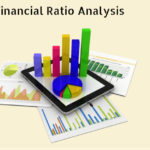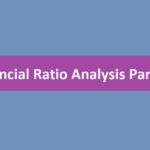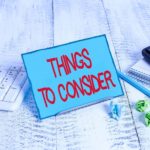Asset Portion of the Balance Sheet Explained
In the previous chapter, we looked at the liabilities part of the balance sheet. Now we will look at the second part of it i.e. the asset part. This part of the balance sheet tells us about every asset of the company which the company has held at any point of time in its entire lifetime. In simple language, an asset is the property of the company which can help the company to earn income later.

As you can see there are 2 types of assets shown here one non current asset and current asset. Under all of this there are a lot of line items and notes attached to them. We will look at all of these in turn.
Non Current Asset (Fixed Asset)
As we learned in the previous chapter that non-current assets are those assets of the company which can benefit the company for more than 365 days i.e. more than one year. You must remember that an asset means an asset that benefits the company financially.
You can see that there is another section in the Non Current Assets section where Fixed Assets is written and there are several line items under it as well. Fixed asset here means that asset of the company which cannot be easily sold or for which cash is not easily available in return. It consists of both tangible and non-tangible assets. Common examples of fixed assets are land, factories, machines, vehicles, buildings, etc. Many types of intangible assets are also considered as fixed assets because they provide long-term benefits to the company. You may notice that there is only one note for each line item – number 10. We will see this in detail further.
The figure below shows the fixed assets of Amara Raja Batteries Ltd.

The first line item is of tangible assets which is Rs.619.8 crores. Remember that a tangible asset is an asset that exists in physical form, that is, something you can see or touch. Generally it consists of factories, plants, machinery, cars, vehicles, buildings etc.
The next line item is Intangible Asset which is priced at Rs.3.2 Crore. Remember that an intangible asset is an asset that has value, but does not have a physical form. You cannot see or touch it. It usually contains things like copyright, trademark, design, patent.
When we discussed the P&L statement, we knew about depreciation. Depreciation is the method of dividing the value of an asset over its useful period of time. With the passage of time the value of the asset decreases as its production capacity, that is, its utilization, also gradually decreases. This happens because either the asset gets old or it gets worn out. This is called depreciation expense or depreciation expense. It is shown in the profit and loss account and in the balance sheet.
Every asset of the company should be depreciated over time. Because of this approach, when the company takes an asset, it is called a gross block. After subtracting depreciation from gross block, we get net block.
Net Block = Gross Block – Accumulated Depreciation
It is to be noted here that the word Accumulated has been used with depreciation here. It states that the value of all depreciation has been added together since the time the company was formed.
When we look at tangible assets of Rs.619.8 crores and intangible assets of Rs.3.2 crores together we must remember that the company has shown this as net block which is obtained after deducting depreciation from gross block. Let’s look at Note 10 associated with fixed assets.
 At the top of the note, you can see gross block, depreciation/amortization and net block highlighted. Here I have highlighted two numbers of net block which match with the figure shown in the balance sheet.
At the top of the note, you can see gross block, depreciation/amortization and net block highlighted. Here I have highlighted two numbers of net block which match with the figure shown in the balance sheet.
Now let’s look at some more details of this note. Under Tangible Asset, you can see every asset of the company.

For example, the company has also placed buildings under tangible assets. I have highlighted this part.
As on March 31, 2013 (FY 13), ARBL had quoted the building as Rs 93.4 crore. 85.8 crore has been added to the cost of the company building in FY14. It is shown as new construction done in this year. Apart from this, the company has shown a deduction of Rs 0.668 from the cost of the building this year. This is the total value of the building this year:
Last year’s building cost + this year’s added cost – this year’s deduction
93.4 + 85.8 – 0.668
= Rs 178.5 crore
This number was highlighted in blue in the picture above. Remember that this is the gross block of the building. By subtracting the accumulated depreciation from the gross block, we get the net block. In the picture below, I have highlighted the depreciation part of the building.

ARBL has shown depreciation of Rs 17.2 crore as on 31 March 2013 (FY 13). In this, they have to add depreciation of Rs 2.8 crore for FY14 and also show deduction of Rs 0.376 crore. Thus the total depreciation for the year would be:
Last year’s depreciation + this year’s depreciation – this year’s deduction
= 17.2 + 2.8 – 0.376 = 19.736 crore
It is highlighted in red in the above picture.
So now we have gross block of building of 178.6 crores, depreciation of 19.736 crores then we can calculate net block: 178.6 – 19.736 = Rs 158.8 crores. It is highlighted in the picture below.
The total net block can be obtained in the same way for each type of tangible and intangible asset.
The next two line items under Fixed Assets are Capital Work in Progress (CWIP) and Intangible Assets under Development.
CWIP includes assets that are currently under construction, such as buildings under construction, new machinery that is currently being added, and other such items that are not ready at the time of preparation of the balance sheet. In other words, it includes the capital expenditure which has been spent but whose work is not completed. This amount is shown in the net block. You can see that ARBL has kept 1443 crores in CWIP. Once the work is completed and the use of this asset is started, this asset is kept in Tangible Asset (under Fixed Asset) and removed from CWIP.
The last line item is Intangible Assets Under Development is similar to CWIP but has intangible assets. Like if a patent has been filed or a copyright is filed or a brand is being developed. In case of ARBL this amount is very small 0.3 crores. All these expenses are added up to arrive at the company’s fixed cost.
Non-current assets (Other line items) Non-current assets (Other line items)
Non-current assets include fixed assets and other line items as well. They are shown in this picture.

Some non current investments have been made by ARBL for long term. This investment is of 16.07 crores. These investments can be anything. Like buying shares of some companies, taking minority stake in a company, debentures, investing in mutual funds etc. Here is a picture of Note 11, which can help you understand this.
 The next line item is Long Term Loans i.e. Long Term Loans and Advances. Which is Rs 56.7 crores. These are loans or advances that the company has given to other companies in its group, to its employees, to the supplier or to any vendor.
The next line item is Long Term Loans i.e. Long Term Loans and Advances. Which is Rs 56.7 crores. These are loans or advances that the company has given to other companies in its group, to its employees, to the supplier or to any vendor.
The last line item in Non-Current Assets is Other Non-Current Assets, which is 0.122 crores. It also includes miscellaneous long term assets.
Current Asset
A company’s current assets are those that the company can convert into cash immediately or very quickly and the company believes that they can be used within 365 days, ie, within a year. These assets are used by the company for its day-to-day operations and for other expenses of the business.
Common examples of current assets are cash, other things like cash, inventories, receivables, short term loans and advances, and many more debtors called sundry debtors.
Take a look at the current assets of ARBL:
 The first line item in the current asset is Inventory which is Rs.335 crores. All the products made by the company, their raw material and other things come in inventory. This also includes those products which are incomplete or which are not yet ready for sale. When the company produces, all the goods go through several stages of production from raw materials or raw materials to finished goods. Inventory held at these various stages is also part of the inventory. You can see a sample of it in Note 14 below.
The first line item in the current asset is Inventory which is Rs.335 crores. All the products made by the company, their raw material and other things come in inventory. This also includes those products which are incomplete or which are not yet ready for sale. When the company produces, all the goods go through several stages of production from raw materials or raw materials to finished goods. Inventory held at these various stages is also part of the inventory. You can see a sample of it in Note 14 below.
 As you can see most of the inventory is reflected in raw material or work-in-progress.
As you can see most of the inventory is reflected in raw material or work-in-progress.
The next line item is Trade Receivables or Accounts Receivables. This is the money that the company is yet to get from its distributors, customers or some other people. In the case of ARBL, this amount is Rs 452.77 crore.
The next line item is cash and cash equivalents, that is, cash and other things like cash. It is considered to be the most liquid asset of the company. Here cash means cash on hand and cash on demand. Cash Equivalent means those short-term investments whose maturity is less than 3 months. This amount is 294.5 crores. This has been shown in detail in Note 16, you can see here that the company has kept money in many types of accounts.
 The next line item is Short-term loans and advances i.e. short-term loans given by the company to the people and are expected to be returned within 1 year i.e. 365 days. . These include loans given to customers, suppliers or employees, advance tax payments (income tax, wealth tax), etc. This amount is 211.9 crores. This is followed by the last line item of the asset segment and in fact also the last line item of the balance sheet – this is called other current asset or other current asset. It is called other because it is not given much importance. This amount is Rs 4.3 crore.
The next line item is Short-term loans and advances i.e. short-term loans given by the company to the people and are expected to be returned within 1 year i.e. 365 days. . These include loans given to customers, suppliers or employees, advance tax payments (income tax, wealth tax), etc. This amount is 211.9 crores. This is followed by the last line item of the asset segment and in fact also the last line item of the balance sheet – this is called other current asset or other current asset. It is called other because it is not given much importance. This amount is Rs 4.3 crore.
So now the total assets of the company are :
Fixed Asset + Current Asset
= 840.831 + 1298.61 crore
= Rs 2139.441 crore, this amount is equal to the liability of the company.
So we looked at the asset portion of the balance sheet and the entire balance sheet as a whole. Take a look at the balance sheet once again.
 You can see that the Balance Sheet equation in ARBL’s Balance Sheet proves to be correct.
You can see that the Balance Sheet equation in ARBL’s Balance Sheet proves to be correct.
Asset = Shareholders’ Fund + Liability
Remember, in the last few chapters, we have learned about Balance Sheet and P&L Statement. But we have not done analysis on their data so that we can know whether the figures are good or bad. We will discuss this in the chapter on Analysis of Financial Ratios.
In the next chapter, we will look at the final financial statement i.e. cash flow statement. But before seeing that, we need to see how the balance and p&l statements are combined.
Linking P&L Statement and Balance Sheet
Now we will see how the balance sheet and P&L statement are interlinked.
In the above picture you can see that the left side is the line items which usually appear in the P&L statement while the right side is the line items which usually appear in the balance sheet. You are aware of all these line items based on the information given in the previous chapters. Now we will see how these line items are related to each other.
First let’s look at the revenue from sales i.e. Revenue from Sales. If a company sells some goods, then it also has to incur some expenses for that. For example, a company has to advertise so that people know about its product. Due to this cash expenditure, the cash remaining with the company decreases. Apart from this, the company also gives some goods on credit, due to which the Accounts Receivables goes up.
The company buys a variety of goods including raw materials to make its product or products, which are called operating expenses. When a company incurs such expenses, two things happen one, it buys raw material which is sometimes taken on credit, which increases the trade payable (account payable) and the level of inventory also changes. Inventory will cost more or less depending on how much time the company needs to sell its inventory.
When a company buys a tangible asset or creates an intangible asset by investing in something like brand building, the company splits the expense over several years, which increases the depreciation on the company’s balance sheet. Remember that the balance sheet is created in a flow manner, so this depreciation gets added to the balance sheet year after year. That’s why depreciation is called accumulated depreciation in the balance sheet.
The things which are included in other income or other income are interest income, sale of subsidiary company, rental income etc. That is why when the company makes an investment, then other income gets affected.
Whenever the company takes any loan (long term or short term), the company has to spend some money for it. The money that is spent is called finance cost or borrowing cost. That is why when debt increases, finance cost also increases and when debt decreases, finance cost comes down.
You should also remember that Profit After Tax- PAT increases the shareholder equity of the company.
Highlights of this chapter
- The assets portion of the balance sheet shows all of the company’s assets.
- Company assets provide economic benefits to the company over its useful life.
- Asset can be divided into two parts non current and current asset.
- The useful life of a non-current asset is 365 days or more than 12 months.
- Current assets are those that the company can convert into cash immediately or very quickly and can be used within 365 days i.e. within a year.
- Unless the depreciation is reduced from the value of the asset, it is called gross block.
- Net Block = Gross Block – Accumulated Depreciation
- The cost of all assets together must be equal to the cost of all liabilities. Only when this happens the balance sheet is said to be balanced.
- Balance sheet and P&L statement are related in many ways

Gaurav Heera is a leading stock market educator, offering the best stock market courses in Delhi. With expertise in trading, options, and technical analysis, he provides practical, hands-on training to help students master the markets. His real-world strategies and sessions make him the top choice for aspiring traders and investors.






